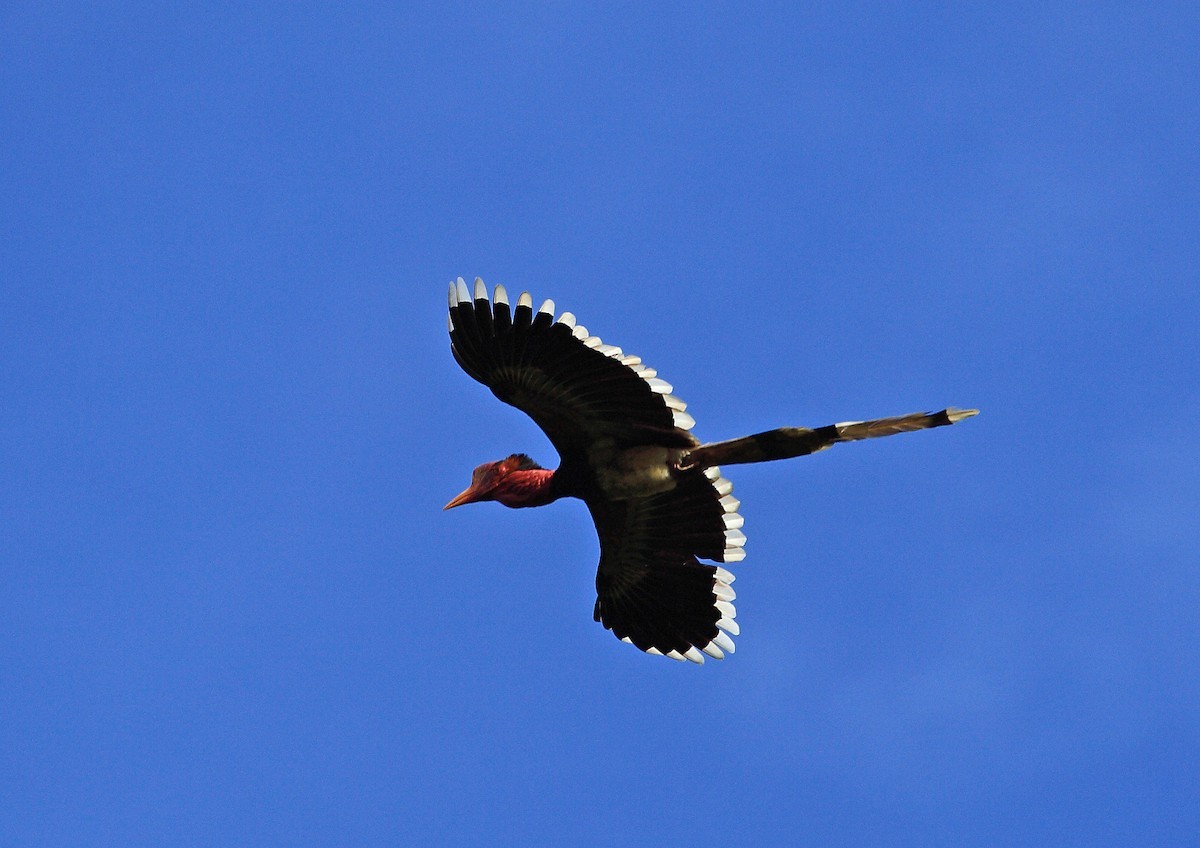Helmeted Hornbill
A species of Helmeted Hornbill Scientific name : Rhinoplax vigil Genus : Helmeted Hornbill
Helmeted Hornbill, A species of Helmeted Hornbill
Botanical name: Rhinoplax vigil
Genus: Helmeted Hornbill
Content
Description General Info
 Photo By Nigel Voaden
Photo By Nigel Voaden Description
It has mostly blackish plumage, except that the belly and legs are white and the tail is white with a black band near the tip of each feather. The tail is long and the two central tail feathers are much longer than the others, giving the bird a total length greater than that of any other hornbill species. The body length is 110–120 cm (43–47 in), not counting the tail feathers, which boost the length a further 50 cm (20 in). One male weighed 3.1 kg (6.8 lb) in weight while two females averaged about 2.7 kg (6.0 lb). Although sometimes considered the largest Asian hornbill, their body weight appears to be similar to that of the great hornbill (and considerably less than the African ground hornbills). This species has a bare, wrinkled throat patch, pale blue to greenish in females and red in males. The casque goes from the base of the bill halfway to the tip, where it ends abruptly. It and the bill are yellow; the red secretion of the preen gland covers the sides and top of the casque and the base of the bill, but often leaves the front end of the casque and the distal half of the bill yellow. Unlike other hornbills, the helmeted hornbill's casque is solid, and the skull including the casque and bill may constitute 10 percent of the bird's weight. 
Size
1.2 m
Nest Placement
Tree
Feeding Habits
Helmeted Hornbill mainly eat fruits like figs, spending half their day hunting small animals such as squirrels and snakes. They forage in tree canopies, utilizing unique digging and upside-down hanging behaviors to extract prey.
Habitat
The helmeted Hornbill primarily resides in lush evergreen forests, often found in foothill regions. This species is also capable of adapting to partially logged forests, though it typically favors undisturbed natural areas. The general environmental conditions of its habitat are characterized by dense tropical vegetation and a relatively stable, humid climate typical of lowland forests.
Dite type
Herbivorous
General Info
Feeding Habits
Bird food type
Species Status
After ongoing hunting pressure and habitat loss, the helmeted hornbill was uplisted from near threatened to critically endangered on the IUCN Red List of Threatened Species in 2015. It is listed in Appendix I of CITES. According to the conservation group TRAFFIC, 2,170 casques were confiscated in just three years in China and Indonesia alone. There are fewer than 100 birds remaining in Thai forests. At least 546 hornbill parts, mostly casques of helmeted hornbills, have been posted for sale on Thai Facebook in the past five years. Traders will pay villagers 5,000-6,000 baht (US$165–200) for a hornbill head. Prices double or triple in cities and increase exponentially when sold overseas. 

 Photo By Nigel Voaden
Photo By Nigel Voaden